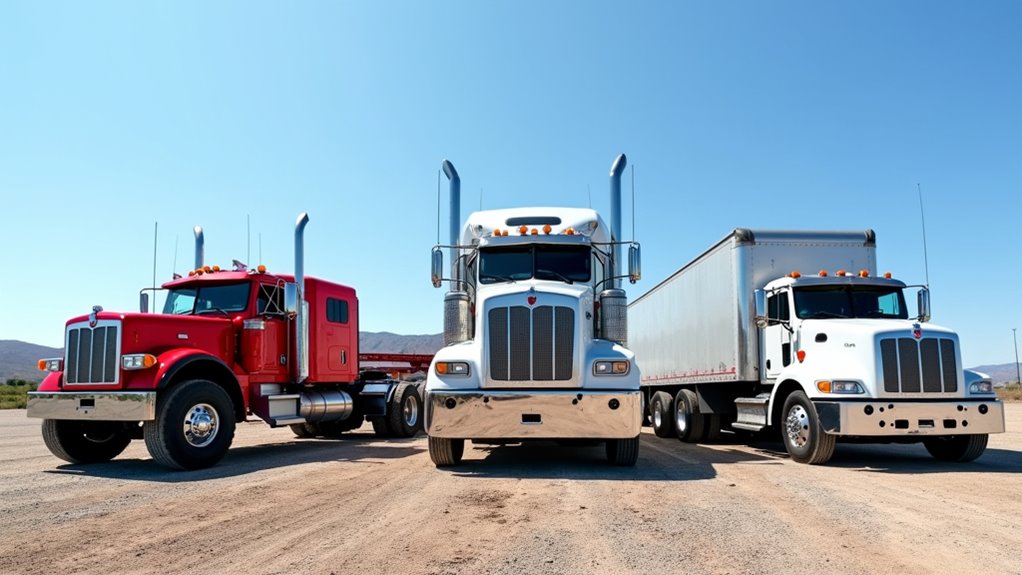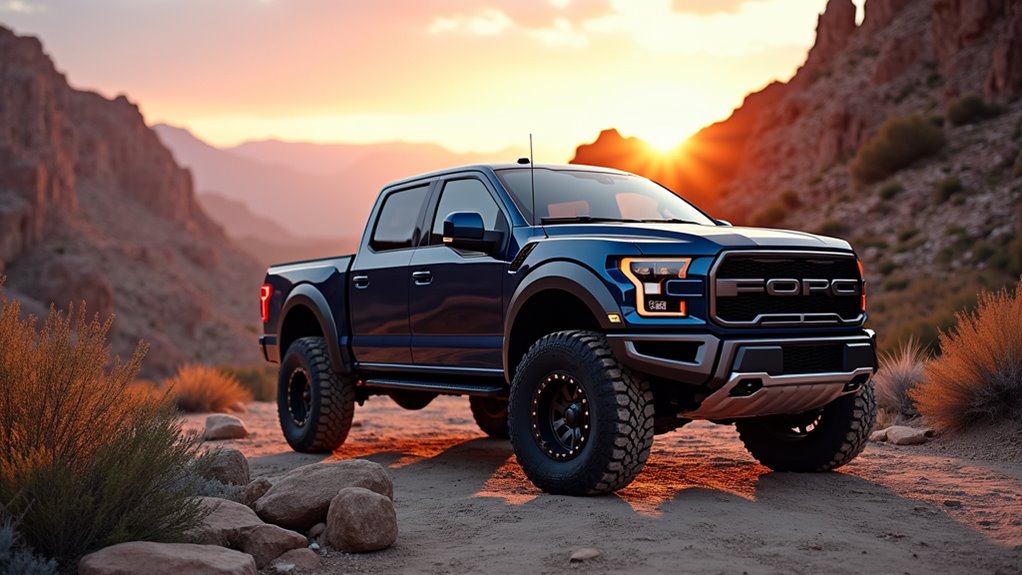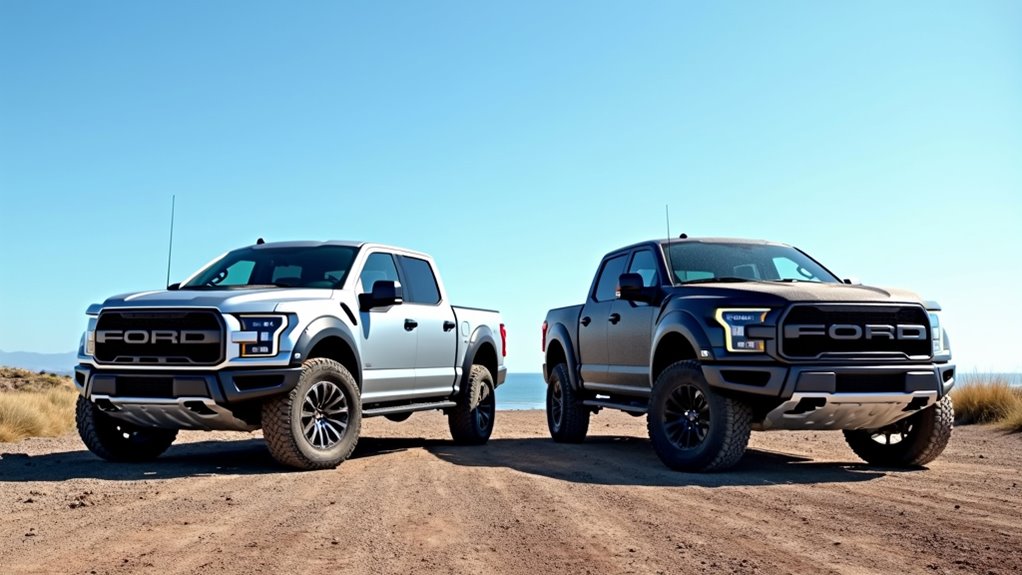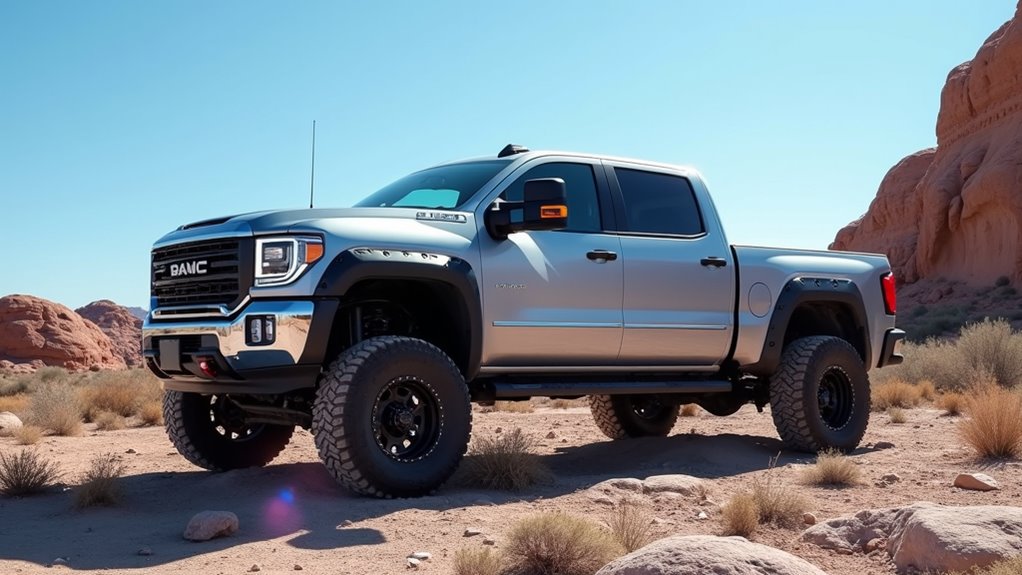Are All Trucks 4-wheel Drives
This post contains affiliate links. As an Amazon Associate, we earn from qualifying purchases.
Not all trucks are 4-wheel drives. They come in various configurations, including 2-wheel drive, 4-wheel drive, all-wheel drive, and even 6-wheel drive, each designed for specific purposes. Stay with us to explore more about these diverse truck setups and the unique benefits they offer!
Essential Facts in 30 Seconds
- Not all trucks are 4-wheel drive; many are 2-wheel drive, often used for city or smooth road conditions.
- 4-wheel drive is common in trucks designed for off-road or challenging terrains, though not standard in all.
- Some trucks have all-wheel drive, which activates only when additional traction is required.
- Truck types like box or refrigerated typically use 2-wheel drive for cost efficiency.
- The choice of drive system depends on the truck’s purpose, with 6-wheel drive used for heavy-duty tasks.
Understanding Truck Drive Systems
Trucks come with different drive systems for various needs. Some have 2-wheel drive, perfect for city roads. Others offer 4-wheel drive for tough terrains. All-wheel drive kicks in only when needed. For big jobs, 6-wheel drive gives extra grip. Know these types to pick the best truck. Understanding 4X4 systems can help in selecting trucks for extreme off-road conditions. Engaging 4WD for traction can significantly improve performance on challenging surfaces.
New tech changes how trucks work today. Electric drive systems cut pollution in cities. Hybrid trucks mix regular and electric power. They save fuel and money. Think about these options for green goals. Battery-electric trucks, powered by renewable electricity, produce no direct pollutants. Additionally, some trucks, like certain Toyota models, offer rear-wheel drive options for balanced performance on highways.
Data shows electric trucks can save 30% on costs. Choose smart for your tasks.
Types of Trucks and Their Configurations

Trucks come in many types, each built for a special job. Box trucks carry goods safely in a closed space. Dump trucks haul dirt or rocks for construction sites. Fire trucks help save lives with ladders and hoses. Cargo needs decide the truck setup every time. Flatbeds move big machines or heavy tools easily. Refrigerated trucks keep food fresh on long trips.
Axle setups matter a lot for stability. Single-unit trucks work for small loads without hassle. Tractor-trailers with tandem or tridem axles handle heavy stuff. Cab styles fit different passenger needs too. Regular cabs suit one or two people only. Extended or crew cabs offer space for more riders. Each truck type also adheres to specific weight limits based on regional regulations and configurations. Drivetrain options also vary, with choices like 2WD and 4WD configurations depending on terrain and usage needs. AWD systems can also be found in some trucks for improved traction on varied surfaces.
Special trucks tackle unique tasks with ease. Concrete mixers blend cement right on site. Military trucks roll over tough, off-road land. Some military trucks are equipped with 4WD systems to navigate challenging terrains effectively. Regional rules change truck designs across places. North American A-trains aren’t like international B-trains at all.
Picking the right truck depends on your job. Match it to the terrain or load type. This way, you get the best results always.
Benefits and Drawbacks of 4-Wheel Drive

Trucks often handle tough jobs with ease. Some come with 4-wheel drive, or 4WD. This feature brings big benefits for hard terrains. Think mud, snow, or steep hills.
4WD gives you better grip on the road. You get stronger control and more towing power. It keeps you moving in bad conditions. Plus, 4WD is tough for off-road trips. You can turn it on when needed. It’s especially ideal for navigating challenging landscapes like rocks or sand. Additionally, 4WD provides exceptional off-road traction compared to other drivetrain systems.
Still, 4WD has some downsides to consider. It lowers your fuel mileage a lot. The system adds extra weight and parts. Repairs and upkeep cost more money. The starting price of 4WD is higher too. Additionally, improper handling can lead to mechanical malfunctions in the drivetrain system. Insurance costs may also be higher due to the vehicle’s added complexity.
Extra weight can slow you down on highways. Wrong use might break the system. Think hard about your driving needs. Make sure 4WD suits you best.
Comparing 2-Wheel Drive and All-Wheel Drive in Trucks

Trucks come in 2-wheel drive and all-wheel drive options. Both have unique strengths and costs. Let’s break it down for easy understanding.
All-wheel drive gives awesome grip on tough roads. Think mud, snow, or rocky paths. It keeps you safe in bad weather. But, it costs more to buy and fix. Fuel use is also higher with this system. Additionally, all-wheel drive systems often operate full-time, providing seamless power distribution to all wheels without driver input.
2-wheel drive works great on smooth, flat roads. It’s perfect for city or highway driving. You pay less to buy and maintain it. Plus, it often carries heavier loads. Fuel savings are a big bonus too. Remember that 2-wheel drive may struggle in adverse conditions like snow or mud, lacking the enhanced traction capability found in 4WD systems.
Check this simple chart for a clear view:
| Feature | 2-Wheel Drive | All-Wheel Drive |
|---|---|---|
| Traction Power | Good on smooth roads | Excellent on rough terrain |
| Cost to Buy | Cheaper | More expensive |
| Maintenance Cost | Low | High |
| Best Terrain | Pavement or flat areas | Mud, snow, uneven ground |
| Load Capacity | Usually higher | Often lower |
| Fuel Use | Saves more gas | Uses more gas |
Pick what matches your roads and budget. Need power for tough spots? Go all-wheel drive. Just hauling on pavement? Stick with 2-wheel drive. Make a smart choice today! Keep in mind that all-wheel drive systems, like those in some SUVs, automatically distribute power to all wheels for enhanced traction.
Trends in Truck Drive Technology

Truck drive technology is moving fast. Electric trucks are becoming popular now. They help save the planet by using less fuel.
Autonomous trucks are also here. They support drivers today and aim for full control soon. This boosts safety and speeds up work.
Safety tools are now common in trucks. Automatic emergency braking stops crashes. Adaptive cruise control keeps a safe distance. These features protect you on long trips. Tesla’s innovations, like the Cybertruck, showcase advanced AWD systems for superior performance across diverse terrains.
IoT tech changes how fleets run. It gives live updates on truck health. Big data helps plan better routes. It also predicts repair needs early. This cuts costs and saves time. Many modern trucks now offer Terrain Management Systems to adapt to various driving conditions effortlessly.
The industry focuses on green goals too. Eco-friendly tech matches global plans. Trucks are getting cleaner every day.
Additionally, many trucks now incorporate advanced 4-wheel drive systems to enhance traction on challenging terrains.
Embrace these changes with open arms. They make trucking safer and smarter. Your road experience improves all the time.
Frequently Asked Questions
How Do Truck Drive Systems Impact Fuel Economy?
Truck drive systems play a big role in fuel economy. A 4WD system often lowers your MPG by 1-2. Why? Extra weight and resistance hurt efficiency. Compare that to 2WD setups. They save more fuel with less drag. Stick to simple choices for better mileage. Data shows 2WD trucks win on gas savings. Keep this in mind for cost cuts.
What Are the Safety Risks of Truck Accidents?
Truck accidents pose serious safety risks you should know about. Driver mistakes often lead to deadly crashes. Badly secured loads can cause dangerous rollovers. Trucks create hazards on busy highways. Always stay alert near them. Data shows over 4,000 fatal truck crashes happen yearly. These accidents harm many innocent people. Keep a safe distance to protect yourself. Awareness saves lives every day. Stay cautious and drive smart!
How Do Trucks Affect Environmental Emissions?
Trucks create a big problem for our air. Their diesel engines release harmful smoke. This smoke adds to climate change every day. Studies show trucks cause 25% of road pollution. That’s a huge number to think about! Act now to cut these emissions. Cleaner trucks mean better air for everyone. Let’s push for change together. Small steps can make a big difference. Protect our planet from this smoky threat.
What Is the Economic Importance of Trucks?
Trucks play a huge role in our economy. They move goods across cities and countries. Supply chains depend on them every single day. Without trucks, stores would run out of products. They support millions of jobs in transport and trade. Think about it—drivers, mechanics, and warehouse workers rely on this industry. Data shows over 70% of U.S. freight moves by truck. That’s a massive impact on businesses. Every delivery keeps shops and factories running strong. Truly, trucks fuel our daily lives!
How Are Regulations Changing Truck Industry Standards?
Truck industry standards are changing fast due to new regulations. Speed limiters are now a must for many trucks. AEB systems help stop crashes before they happen. Drug violation penalties are stricter than ever. Data shows fines can reach up to $10,000. Stay ready by following these rules today. Adapt now to avoid big problems later. Keep your business safe and strong. New laws mean better safety for everyone. Act fast to meet these important changes.
Conclusion
Trucks aren’t all 4-wheel drive. Let’s clear this up fast. Many trucks have 4-wheel drive for tough roads. But lots come with 2-wheel drive too. Some even offer all-wheel drive options. It depends on your needs. Stats show only 30% of trucks sold are 4-wheel drive. So, plenty of choices exist. Think about where you drive most. Rough terrain? Go for 4-wheel drive. City streets? 2-wheel drive works fine. Check the specs before buying. Match the drive to your style. Simple as that!
